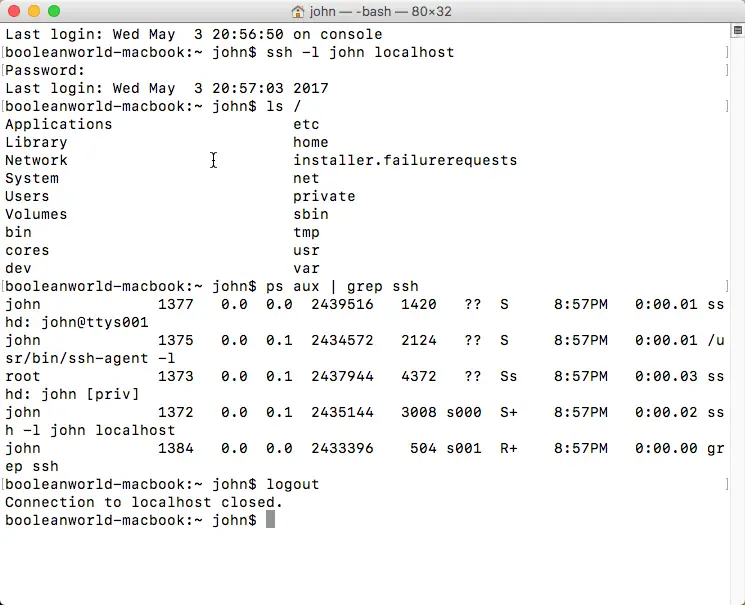

- How to get ssh on mac how to#
- How to get ssh on mac software#
- How to get ssh on mac password#
- How to get ssh on mac windows#
On macOS, click Applications, click Utilities and then click Terminal.
How to get ssh on mac software#
If you enter one, you will have to provide it every time you use this key (unless you are running SSH agent software that stores the decrypted key). Once you select a location for the key, you’ll be prompted to enter an optional passphrase which encrypts the private key file on disk. Selecting yes is an irreversible destructive process. If you choose to overwrite the key on disk, you will not be able to authenticate using the previous key anymore. In order to use the Terminal to create instances, set up triton and CloudAPI as well as the triton-docker commandline tool.If you have previously generated a key pair, you may see a prompt that looks like this: /home/username/.ssh/id_rsa already exists. Right in the portal, you can easily create Docker containers, infrastructure containers, and hardware virtual machines.
How to get ssh on mac password#
You may see a password prompt like this: $ ssh password: It will now appear in your table of keys under SSH. Note: although providing a key name is optional, it is a best practice for ease of managing multiple SSH keys.
How to get ssh on mac how to#
In this tutorial, you will learn how to install PuTTY on a machine running macOS. The client allows users to connect remotely to a computer and securely transfer files.
How to get ssh on mac windows#

ssh directory and is used to verify the public key you use belongs to the same Triton Compute Service account.

Your private key is saved to the id_rsa file in the. Your identification has been saved in /Users/myname/.ssh/id_rsa. You will need to enter the passphrase a second time to continue.Īfter you confirm the passphrase, the system generates the key pair. You can also hit the ENTER key to accept the default (no passphrase). The ssh-keygen utility prompts you for a passphrase. Press the ENTER key to accept the default location. When you execute this command, the ssh-keygen utility prompts you to indicate where to store the key. To generate SSH keys in macOS, follow these steps:Įnter the following command in the Terminal window. When you generate the keys, you will use ssh-keygen to store the keys in a safe location so you can bypass the login prompt when connecting to your instances. The other file is a public key which allows you to log into the containers and VMs you provision. One is the private key, which should never be shared with anyone. Generating an SSH keyĪn SSH key consists of a pair of files. The Terminal window opens with the commandline prompt displaying the name of your machine and your username.

You generate an SSH key through macOS by using the Terminal application.


 0 kommentar(er)
0 kommentar(er)
